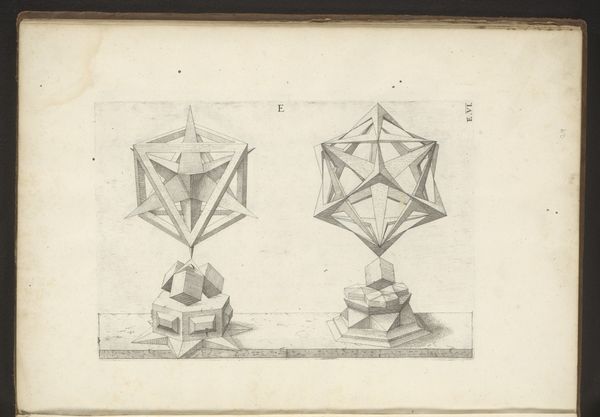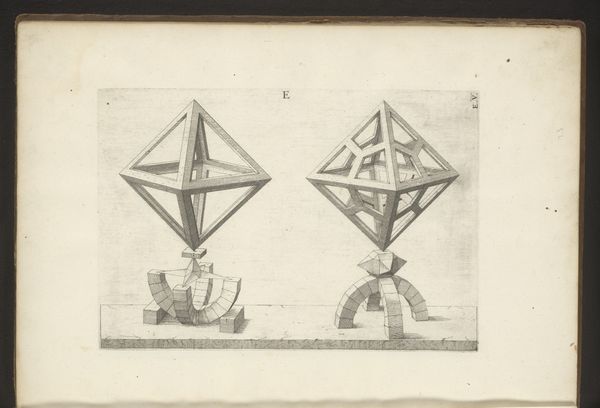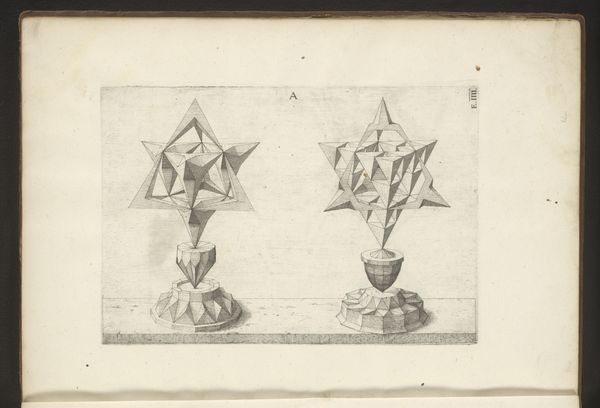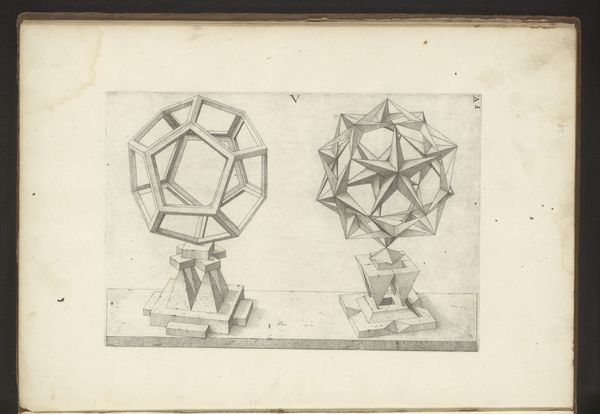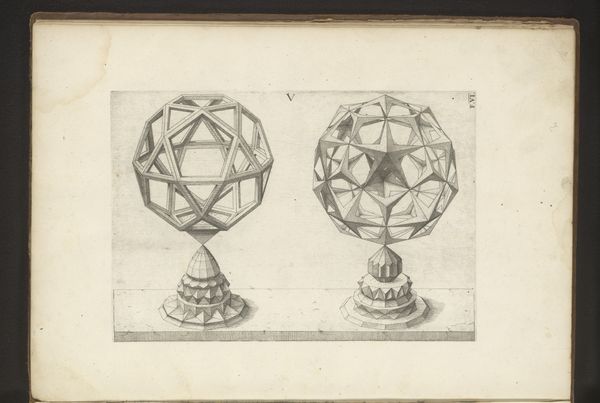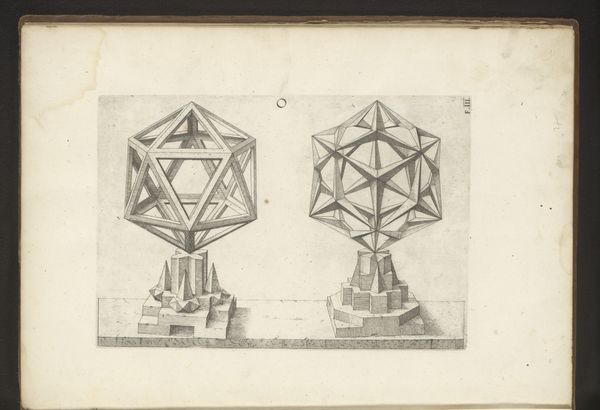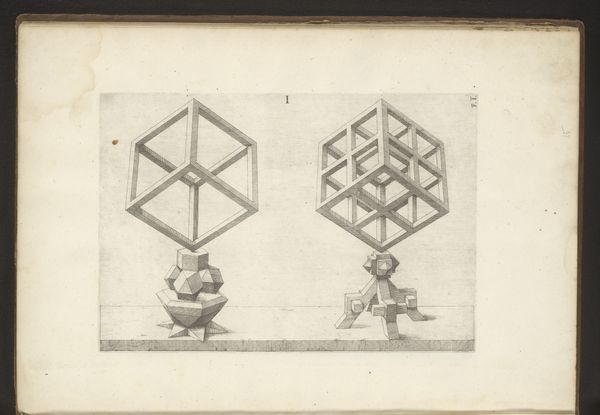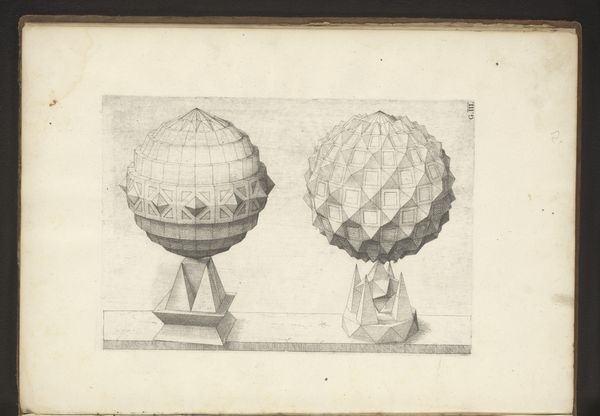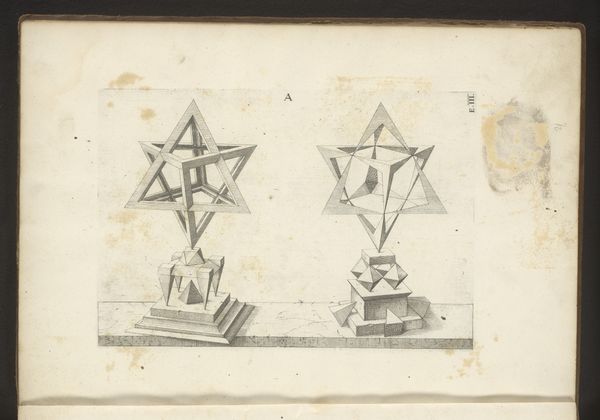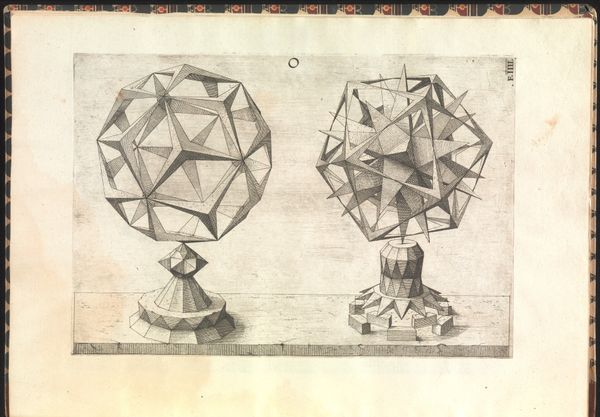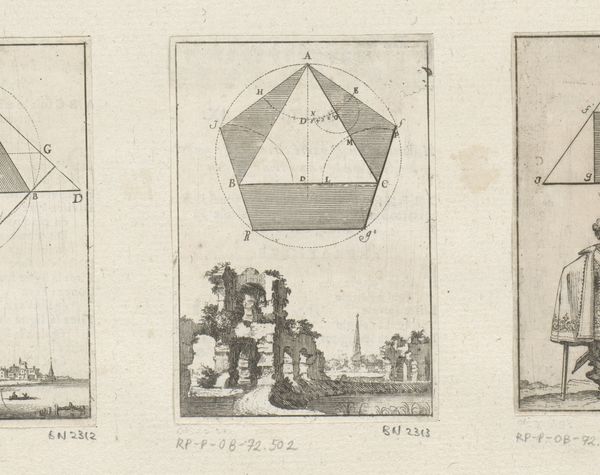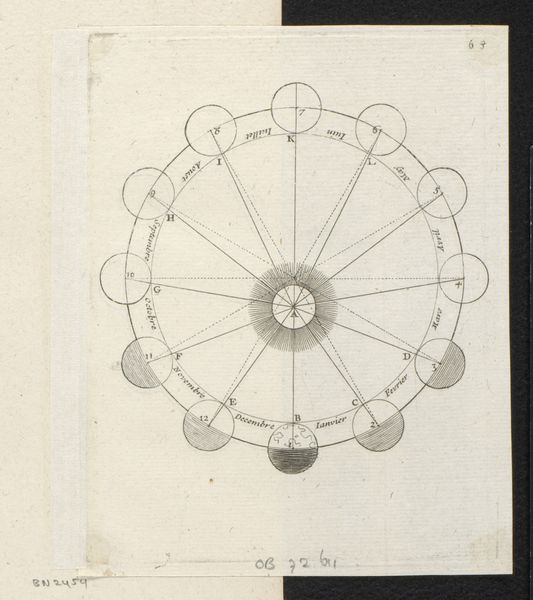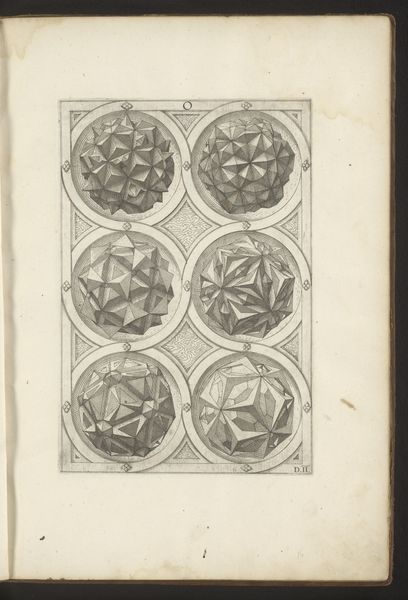
Twee veelvlakken met een hexaëder en een tetraëder als uitgangspunt 1568
0:00
0:00
jostamman
Rijksmuseum
#
aged paper
#
toned paper
#
light pencil work
#
sketch book
#
personal sketchbook
#
pen-ink sketch
#
pen and pencil
#
sketchbook drawing
#
watercolour illustration
#
sketchbook art
Dimensions: height 260 mm, width 179 mm
Copyright: Rijks Museum: Open Domain
Jost Amman created this print, entitled 'Two polyhedra based on a hexahedron and a tetrahedron', using etching techniques in the late 16th century. The linear precision here is really remarkable; the artist expertly used etched lines to create a sense of three-dimensionality. Notice the different weights of the lines, carefully modulating to suggest light and shadow. It’s a testament to Amman's skill as a draughtsman, and his deep understanding of geometry. Back in the 1500's, geometry wasn't just math, it was a fundamental tool for artists and artisans. Prints like this served a purpose. They were pattern books, intended to disseminate design ideas. Amman's print bridges the gap between the theoretical realm of mathematics and the practical world of craftsmanship. Artisans could study these images, and then apply those principles to their own work. This print really exemplifies how art, craft, and science were intertwined. It invites us to appreciate the knowledge embedded in making, and how design ideas circulate and evolve through the skilled hands of makers.
Comments
No comments
Be the first to comment and join the conversation on the ultimate creative platform.
